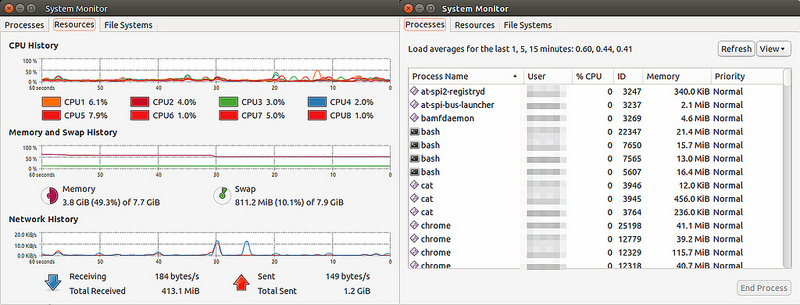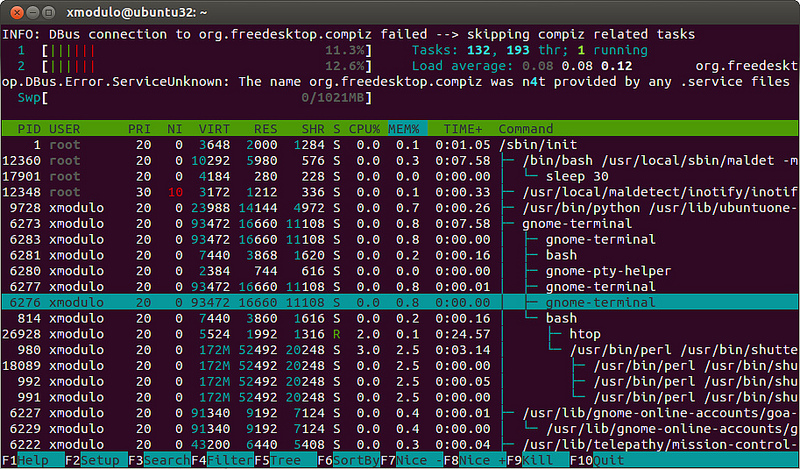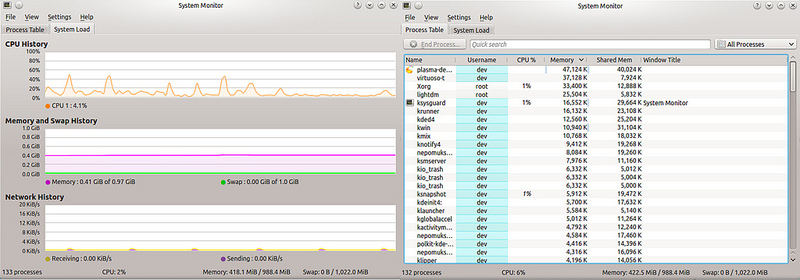How to check Linux memory usage
For Linux system administrators, memory management has always been a complex and critical issue. During use, we often need to check memory usage and solve the problem of system crash caused by excessive memory consumption. This article will introduce how to check Linux memory usage and find potential problems, while also providing some common memory management tips and strategies.
When it comes to Linux system performance optimization, physical memory is the most important factor. Naturally, Linux provides a wealth of options for monitoring the usage of precious memory resources. Different tools differ in terms of monitoring granularity (e.g., system-wide, per-process, per-user), interface mode (e.g., graphical user interface, command line, ncurses), or operating mode (interactive mode, batch mode). not exactly.
The following is an alternative, but not comprehensive, list of graphical or command line tools for checking used and available memory on Linux platforms.
1./proc/meminfo
One of the easiest ways is to check memory usage through "/proc/meminfo". This dynamically updated virtual file is actually the source of information for memory-related tools such as free, top, and ps. From the amount of free/idle physical memory to the amount waiting to be written to cache or the amount written back to disk, "/proc/meminfo" has it all. Memory information for a specific process can also be obtained through "/proc/statm" and "/proc/status".
1.$ cat /proc/meminfo

2. atop
The atop command is an interactive system and process monitoring tool based on ncurses for terminal environments. It displays a dynamically updated summary of system resources (CPU, memory, network, input/output, cores) and uses eye-catching colors to highlight high-load parts of the system with warning messages. It also provides a top-like view of thread (or user) resource usage, so system administrators can find which processes or users are causing the system load. The memory statistics report includes total/idle memory, cached/buffered memory and committed virtual memory.
1.$ sudo atop

3. free
The free command is a quick and easy way to get an overview of memory usage. This information is obtained from "/proc/meminfo". It provides a snapshot showing total/free physical memory and system swap area, as well as used/free kernel buffers.
1.$ free -h

4. GNOME System Monitor
GNOME System Monitor is a graphical interface application that displays recent historical information on system resource usage including CPU, memory, swap area and network. It also provides a process view with CPU and memory usage.
1.$ gnome-system-monitor

5. htop
The htop command is an interactive process view based on ncurses, which displays the memory usage of each process in real time. It reports the resident memory size (RSS) of all running processes, the total size of programs in memory, library size, shared page size, and dirty page size. You can scroll the process list horizontally or vertically to view it.
1.$ htop

6. KDE System Monitor
Just like the GNOME desktop has GNOME System Monitor, the KDE desktop also has its own counterpart application: KDE System Monitor. The functionality of this tool is very similar to the GNOME version, that is, it also displays a real-time history of system resource usage and CPU/memory consumption with each process.
1.$ ksysguard

In short, Linux memory management is an area that requires continuous learning and exploration. We hope that through the introduction and analysis of this article, readers can better understand the working principle of memory under Linux systems, and at the same time, they can better deal with various memory problems that may be encountered. If you have any questions or doubts about Linux memory management, please leave a message in the comment area to discuss with us.
The above is the detailed content of How to check Linux memory usage. For more information, please follow other related articles on the PHP Chinese website!

Hot AI Tools

Undresser.AI Undress
AI-powered app for creating realistic nude photos

AI Clothes Remover
Online AI tool for removing clothes from photos.

Undress AI Tool
Undress images for free

Clothoff.io
AI clothes remover

Video Face Swap
Swap faces in any video effortlessly with our completely free AI face swap tool!

Hot Article

Hot Tools

Notepad++7.3.1
Easy-to-use and free code editor

SublimeText3 Chinese version
Chinese version, very easy to use

Zend Studio 13.0.1
Powerful PHP integrated development environment

Dreamweaver CS6
Visual web development tools

SublimeText3 Mac version
God-level code editing software (SublimeText3)

Hot Topics
 What computer configuration is required for vscode
Apr 15, 2025 pm 09:48 PM
What computer configuration is required for vscode
Apr 15, 2025 pm 09:48 PM
VS Code system requirements: Operating system: Windows 10 and above, macOS 10.12 and above, Linux distribution processor: minimum 1.6 GHz, recommended 2.0 GHz and above memory: minimum 512 MB, recommended 4 GB and above storage space: minimum 250 MB, recommended 1 GB and above other requirements: stable network connection, Xorg/Wayland (Linux)
 Linux Architecture: Unveiling the 5 Basic Components
Apr 20, 2025 am 12:04 AM
Linux Architecture: Unveiling the 5 Basic Components
Apr 20, 2025 am 12:04 AM
The five basic components of the Linux system are: 1. Kernel, 2. System library, 3. System utilities, 4. Graphical user interface, 5. Applications. The kernel manages hardware resources, the system library provides precompiled functions, system utilities are used for system management, the GUI provides visual interaction, and applications use these components to implement functions.
 How to run java code in notepad
Apr 16, 2025 pm 07:39 PM
How to run java code in notepad
Apr 16, 2025 pm 07:39 PM
Although Notepad cannot run Java code directly, it can be achieved by using other tools: using the command line compiler (javac) to generate a bytecode file (filename.class). Use the Java interpreter (java) to interpret bytecode, execute the code, and output the result.
 vscode cannot install extension
Apr 15, 2025 pm 07:18 PM
vscode cannot install extension
Apr 15, 2025 pm 07:18 PM
The reasons for the installation of VS Code extensions may be: network instability, insufficient permissions, system compatibility issues, VS Code version is too old, antivirus software or firewall interference. By checking network connections, permissions, log files, updating VS Code, disabling security software, and restarting VS Code or computers, you can gradually troubleshoot and resolve issues.
 vscode terminal usage tutorial
Apr 15, 2025 pm 10:09 PM
vscode terminal usage tutorial
Apr 15, 2025 pm 10:09 PM
vscode built-in terminal is a development tool that allows running commands and scripts within the editor to simplify the development process. How to use vscode terminal: Open the terminal with the shortcut key (Ctrl/Cmd). Enter a command or run the script. Use hotkeys (such as Ctrl L to clear the terminal). Change the working directory (such as the cd command). Advanced features include debug mode, automatic code snippet completion, and interactive command history.
 How to check the warehouse address of git
Apr 17, 2025 pm 01:54 PM
How to check the warehouse address of git
Apr 17, 2025 pm 01:54 PM
To view the Git repository address, perform the following steps: 1. Open the command line and navigate to the repository directory; 2. Run the "git remote -v" command; 3. View the repository name in the output and its corresponding address.
 Where to write code in vscode
Apr 15, 2025 pm 09:54 PM
Where to write code in vscode
Apr 15, 2025 pm 09:54 PM
Writing code in Visual Studio Code (VSCode) is simple and easy to use. Just install VSCode, create a project, select a language, create a file, write code, save and run it. The advantages of VSCode include cross-platform, free and open source, powerful features, rich extensions, and lightweight and fast.
 Can vscode be used for mac
Apr 15, 2025 pm 07:36 PM
Can vscode be used for mac
Apr 15, 2025 pm 07:36 PM
VS Code is available on Mac. It has powerful extensions, Git integration, terminal and debugger, and also offers a wealth of setup options. However, for particularly large projects or highly professional development, VS Code may have performance or functional limitations.






